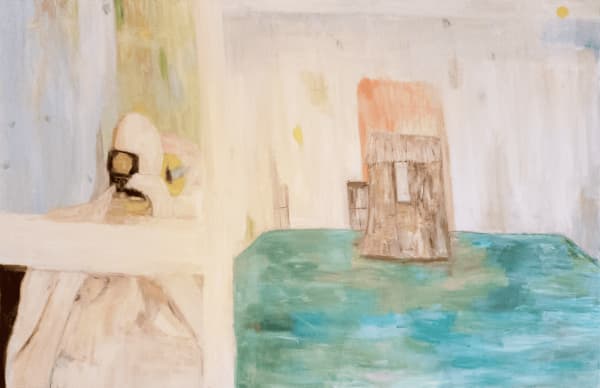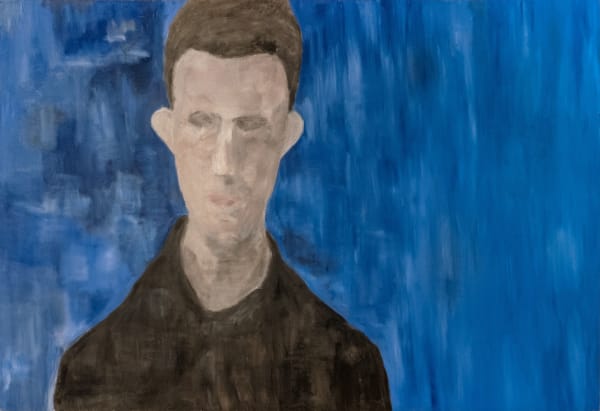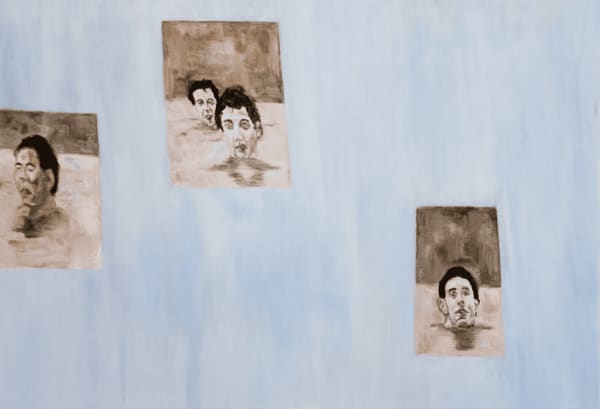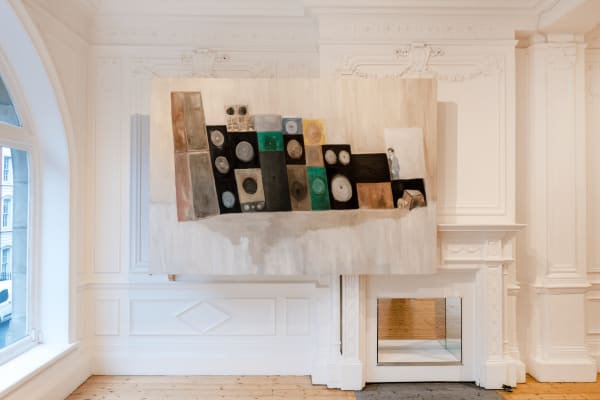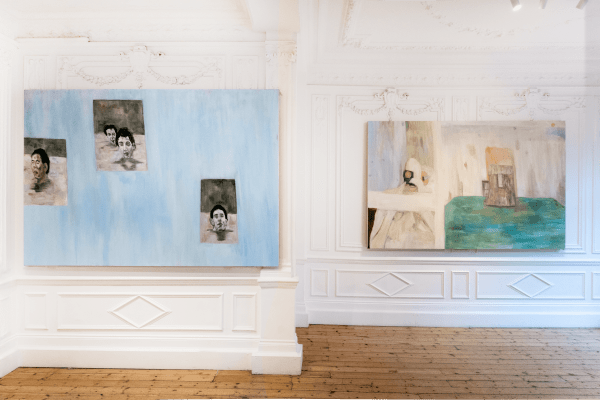In Counterpoint: Benito Ekmekdjian
“It is possible to memorise instrumental music, but it is impossible to recall a painting in its entirety. We remember what unfolds in sequence, not what is given all at once.”
- Luis Sagasti, Una ofrenda musical , 2017
This observation became the point of departure for Benito Ekmekdjian’s In Counterpoint . Developed through a dialogue with Sagasti, the series asks what happens when painting borrows the temporality of music; when an image resists being apprehended in a single glance and instead demands succession, a choreography of the gaze that unfolds in time and space, leaving behind a sequence of impressions rather than a total image.
Four large canvases — Breakup , Sweat , Presence, and Misery — appear as distinct voices within a larger composition. These canvases were meant to exist together, yet were conceived and developed separately and in succession. Each asserts its own rhythm: dense layers or translucent washes, gestures that press forward or linger, tones that darken or open towards light. For Benito, everything appears during the act of painting; whatever he sees, reads, or listens to takes shape on the canvas.
Breakup speaks of rupture: the division of the canvas mirrors the artist’s move from Argentina to the UK, where symbols of home and absence are refracted through colour and gesture, while also revealing his homage to Cy Twombly. In Sweat , Ekmekdjian returns to portraiture, reworking the cover of Slint’s Spiderland into a fragmented stage where faces surface beneath a pale blue background; an image of fragility and nostalgia, which echoes Kuitca’s melancholic spaces. Presence anchors itself in sound, its speakers evoking music as an ever-present force, reverberating as both subject and structure. Finally, Misery closes the cycle. After months devoted to painting, this last work arrived as a grand finale. “Simplicity was the key to achieving a hard-hitting cohesive image,” Benito notes. A portrait distilled to its essence, the painting stands as a full stop, or, in musical terms, a perfect cadence.
Like silence in music, the works find resonance in their pauses and intervals, in the negative spaces that hold the image in suspension. Emerging from fragments of personal archive, musical references, and restless impulses, they carry painting into the terrain of memory: partial, successive, always in motion. To engage with them is to walk, to let the gaze unfold as if following a line of melody. In Counterpoint, memory is not a picture to be fixed but a flicker, a sequence of impressions: a timbre, a hue, a trace. The paintings remind us that memory composes itself with fragments, that to remember is to misremember. As Sagasti notes, even music lingers only in part, as a vibration that dissolves as it emerges. And yet, within this fragility, moments of alignment appear; flashes where the fragments briefly gather and suggest a whole. Perhaps it is here, in this oscillation between part and whole, that the gestures of memory carry within them the promise of totality.
Curatorial text by: LATAMesa (`Carolina Orlando & Pilar Seivane)


